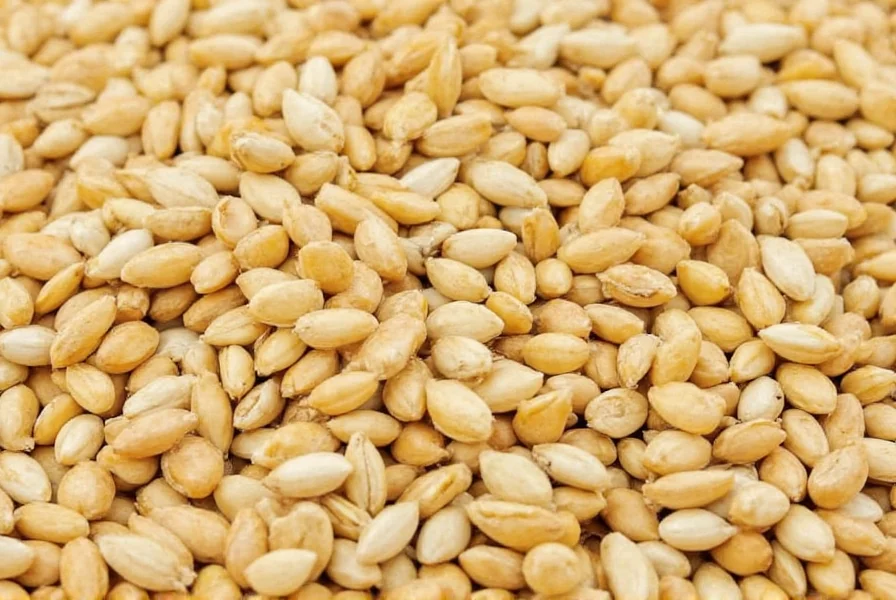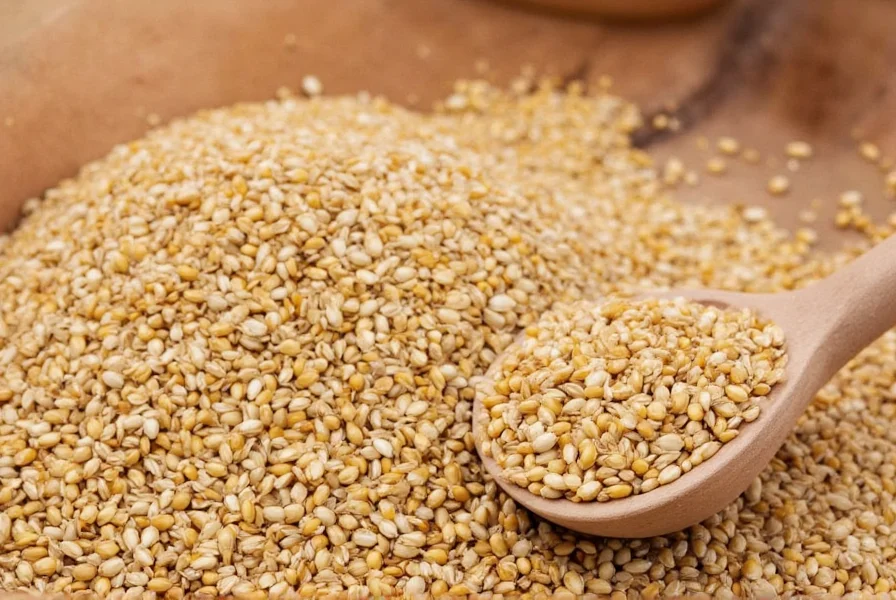Sesame seeds have been cultivated for over 5,000 years, with historical evidence tracing their origins to ancient Africa and India. Today, they rank among the most important oilseed crops globally, valued not only for culinary applications but also for their remarkable resilience in arid growing conditions where other crops might fail.
Botanical Classification and History
Sesame (Sesamum indicum) belongs to the Pedaliaceae family and is classified as a dicotyledonous annual plant. Despite common misconceptions, sesame seeds are not true nuts but rather oilseeds that grow within protective capsules on the sesame plant. The name "sesame" derives from the ancient Greek word "sésamon," which itself came from Semitic languages.
Archaeological evidence shows sesame was cultivated as early as 1600 BCE in the Indus Valley civilization. Ancient Egyptians and Babylonians used sesame seeds in breads and as a medicinal ingredient. The famous phrase "open sesame" from Arabian folklore highlights the seed's historical significance in Middle Eastern cultures, referring to the distinctive way sesame pods burst open when ripe.
Physical Characteristics and Varieties
Sesame seeds measure approximately 3-4 mm in length and 2 mm in width, with a smooth, teardrop shape. The most common varieties include:
- White sesame seeds - Most widely available, with a mild flavor
- Black sesame seeds - Stronger, more bitter taste, popular in Asian cuisine
- Brown sesame seeds - Natural husk color, between white and black varieties
- Red sesame seeds - Less common, with a distinctive color and flavor profile
The color differences primarily result from varying levels of protective seed coat pigments. Black sesame seeds contain higher levels of anthocyanins, while white sesame seeds have had their outer husk removed through processing.
| Nutrient | Per 1 Tbsp (9g) | Per 1/4 Cup (36g) |
|---|---|---|
| Calories | 52 | 206 |
| Total Fat | 4.5g | 18g |
| Saturated Fat | 0.7g | 2.7g |
| Protein | 1.6g | 6.3g |
| Calcium | 88mg (7% DV) | 351mg (27% DV) |
| Magnesium | 32mg (8% DV) | 127mg (30% DV) |
| Iron | 1.3mg (7% DV) | 5.2mg (29% DV) |
Nutritional Profile and Health Benefits
What is a sesame seed's nutritional advantage? These tiny seeds pack a remarkable nutritional punch considering their size. Sesame seeds contain approximately 50-60% oil, primarily composed of healthy unsaturated fats including oleic and linoleic acids. They're also an excellent plant-based source of complete protein, containing all nine essential amino acids.
Research suggests regular consumption of sesame seeds may contribute to cardiovascular health by helping maintain healthy cholesterol levels. The high calcium content makes them valuable for bone health, particularly for those following dairy-free diets. Sesame seeds also contain lignans like sesamin and sesamolin, which have demonstrated antioxidant properties in scientific studies.
When considering what is a sesame seed good for beyond basic nutrition, their versatility stands out. Unlike many seeds, sesame maintains its nutritional integrity even when roasted, making it valuable in various culinary applications without significant nutrient loss.

Culinary Applications Worldwide
What is a sesame seed used for in cooking across different cultures? The answer reveals a remarkable global culinary journey. In Middle Eastern cuisine, sesame seeds form the base of tahini paste, essential for hummus and halva. Japanese cooking features gomashio, a seasoning of toasted sesame seeds and salt. Chinese and Korean cuisines use sesame oil as a flavor enhancer in dressings and marinades.
The unique property that makes sesame seeds valuable in baking is their natural preservative quality. The antioxidant compounds in sesame help prevent rancidity in baked goods, extending shelf life while adding flavor. This characteristic explains why sesame seeds have been used as a bread topping since ancient times.
Professional chefs often toast sesame seeds before use to enhance their nutty flavor profile. The toasting process develops complex flavor compounds through the Maillard reaction, transforming the mild-tasting raw seeds into a more robust ingredient. Understanding what is the difference between sesame seeds when raw versus toasted helps home cooks maximize their culinary potential.
Storage and Allergy Considerations
Due to their high oil content, sesame seeds can become rancid if not stored properly. For maximum freshness, keep them in an airtight container in the refrigerator (up to 6 months) or freezer (up to 1 year). What is a sesame seed's shelf life at room temperature? Typically 2-3 months in a cool, dark pantry.
Sesame allergy has become increasingly recognized as a significant food allergy worldwide. In 2023, the U.S. officially designated sesame as the ninth major food allergen requiring labeling. Symptoms of sesame seed allergy can range from mild (hives, itching) to severe (anaphylaxis). Those with tree nut allergies may also react to sesame seeds, though they are botanically unrelated.

Sustainable Agriculture and Modern Production
Sesame's drought tolerance makes it an increasingly important crop in the face of climate change. What is a sesame seed's agricultural advantage? The plant requires minimal water compared to other oilseed crops and can grow in marginal soils where many crops would fail. Major producers include Sudan, Myanmar, India, and Tanzania, with global production exceeding 6 million metric tons annually.
Modern harvesting techniques have addressed the historical challenge of sesame's tendency to 'shatter' or release seeds prematurely. Selective breeding has produced varieties with stronger seed capsules that remain closed until mechanical harvesting, significantly improving yield efficiency while maintaining the nutritional integrity that makes sesame valuable.
Frequently Asked Questions
Are sesame seeds considered nuts for allergy purposes?
No, sesame seeds are not botanically related to tree nuts. However, sesame is now recognized as a major food allergen in its own right. People with tree nut allergies may sometimes react to sesame due to cross-reactivity, but they are distinct allergens requiring separate consideration.
What is the difference between hulled and unhulled sesame seeds?
Hulled sesame seeds have had their outer bran layer removed, resulting in a lighter color and milder flavor. Unhulled seeds retain their natural bran, making them darker (typically brown or black) and providing higher fiber and calcium content. Unhulled seeds have a slightly more bitter taste but offer greater nutritional benefits.
Can you eat sesame seeds raw?
Yes, sesame seeds can be eaten raw, though toasting enhances their flavor and digestibility. Raw sesame seeds contain oxalates which can interfere with mineral absorption, but this is generally not a concern for most people consuming normal dietary amounts. Those with kidney stone issues may want to moderate raw sesame consumption.
How do sesame seeds compare nutritionally to other popular seeds?
Sesame seeds contain more calcium than chia or flax seeds, making them particularly valuable for bone health. They have a higher fat content than pumpkin seeds but with a more favorable omega-6 to omega-3 ratio. Unlike chia and flax, sesame seeds don't form a gel when mixed with liquid, making them suitable for different culinary applications.
What gives black sesame seeds their distinctive color and flavor?
Black sesame seeds contain higher levels of anthocyanins and other polyphenols in their seed coat, which provide both the dark color and a slightly more bitter, earthier flavor compared to white sesame seeds. These compounds also contribute to black sesame's higher antioxidant capacity, making them particularly valued in traditional Asian medicine systems.











 浙公网安备
33010002000092号
浙公网安备
33010002000092号 浙B2-20120091-4
浙B2-20120091-4